This was the first field day at Sandgate Park in 2017.
There was a good turn out and the weather was fine, with sunshine and a clear blue sky.
In the woods the team set to coppicing the trees and tidying up the pile of branches that had accumulated last year. The twigs and small branches were burnt and the logs neatly stacked.
On the heather bank we continued removing the brambles and invasive shrubs to let the heather regenerate.
Almost all of the heather bank has now been cleared and we are anticipating a good show of foxgloves in early summer and heather later on in the summer. There are still some pine seedlings that need to be taken out, mainly from near the top of the bank.
As usual we stopped halfway through the morning for tea or coffee and cake and for a bit of a chat.
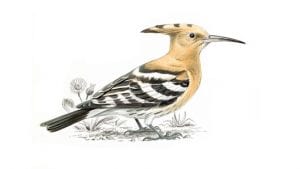
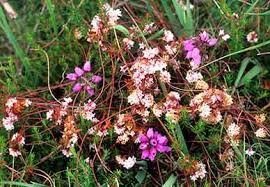
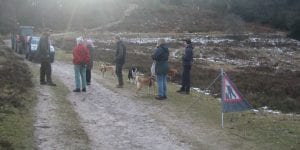 om the snowfall a couple of days earlier still lay on the ground as we gathered to start work on Saturday morning. Local dog walkers stopped for a chat with Andy while he waited for the Sa
om the snowfall a couple of days earlier still lay on the ground as we gathered to start work on Saturday morning. Local dog walkers stopped for a chat with Andy while he waited for the Sa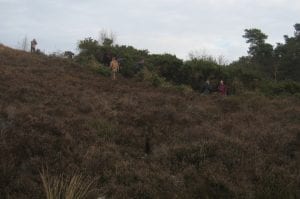 ndgate Conservation Society volunteers to arrive.
ndgate Conservation Society volunteers to arrive.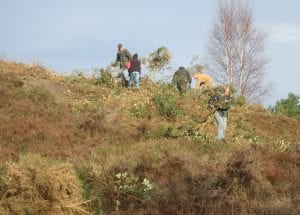
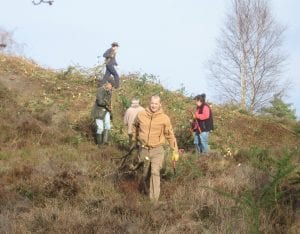
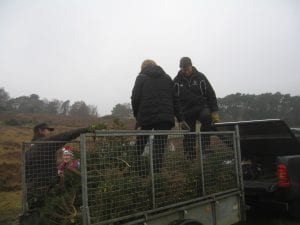 We loaded the cut material into a trailer so that our local NT warden could take it away and burn it off site. No bonfires are allowed on this part of the Warren because it is the site of scheduled Ancient Monuments.
We loaded the cut material into a trailer so that our local NT warden could take it away and burn it off site. No bonfires are allowed on this part of the Warren because it is the site of scheduled Ancient Monuments.